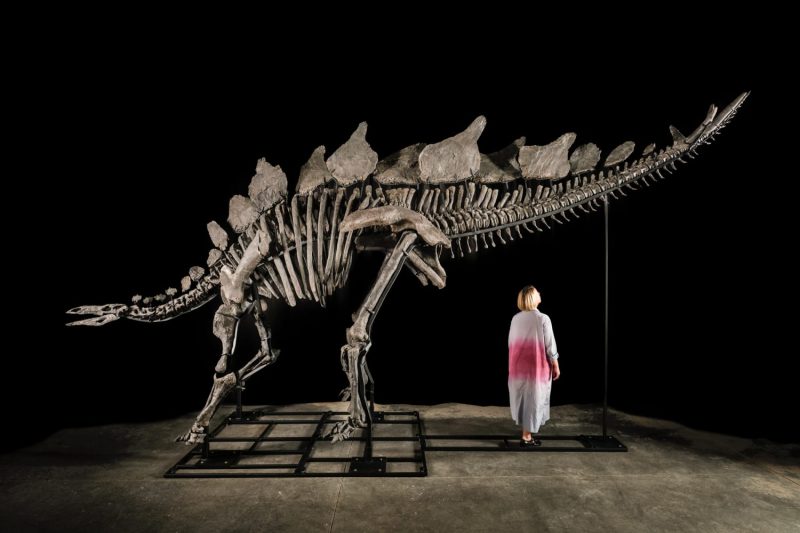In a recent record-breaking auction sale, billionaire Ken Griffin acquired a stegosaurus skeleton for a staggering $45 million, adding a new dimension to his already impressive collection of fossils. The purchase of this prehistoric masterpiece showcases both Griffin’s passion for natural history and his willingness to invest substantial sums in acquiring rare and significant artifacts.
The stegosaurus, a herbivorous dinosaur known for its distinctive plates and spiky tail, roamed the Earth over 150 million years ago during the late Jurassic period. Its fossilized remains are highly sought after by collectors and museums alike, making the sale of this particular specimen a momentous event in the world of paleontology and auction houses.
Griffin’s decision to acquire the stegosaurus highlights the growing trend of wealthy individuals investing in alternative assets, such as art, collectibles, and rare artifacts. Beyond their aesthetic appeal, these treasures offer diversification and potentially lucrative returns, making them attractive investment options for high-net-worth individuals seeking to preserve and grow their wealth.
The $45 million price tag attached to the stegosaurus underscores the scarcity and desirability of such specimens in the market. Fossil auctions have become highly competitive, with prices reaching astronomical heights as bidders vie for the chance to own a piece of Earth’s ancient history. Griffin’s willingness to pay top dollar for the stegosaurus demonstrates his commitment to securing unique and significant pieces for his personal collection.
While some may view Griffin’s purchase as an extravagant indulgence, others see it as a commendable investment in our shared heritage and an opportunity to support scientific research and education. Museums often rely on private collectors to acquire and preserve important artifacts for the benefit of future generations, ensuring that these treasures are not lost to time or neglect.
In addition to his passion for natural history, Griffin’s acquisition of the stegosaurus reflects his philanthropic spirit and commitment to sharing his wealth and resources for the betterment of society. By investing in rare artifacts and supporting cultural institutions, Griffin contributes to the preservation and dissemination of knowledge, enriching the lives of others and fostering a deeper appreciation for our planet’s history.
In conclusion, Ken Griffin’s purchase of a stegosaurus skeleton for $45 million is a testament to his love for natural history, his willingness to invest in rare artifacts, and his commitment to preserving our planet’s ancient past. As wealthy individuals increasingly turn to alternative assets as investment opportunities, the market for fossils and collectibles continues to thrive, offering both financial returns and intangible rewards for those who appreciate the value of our shared heritage.
